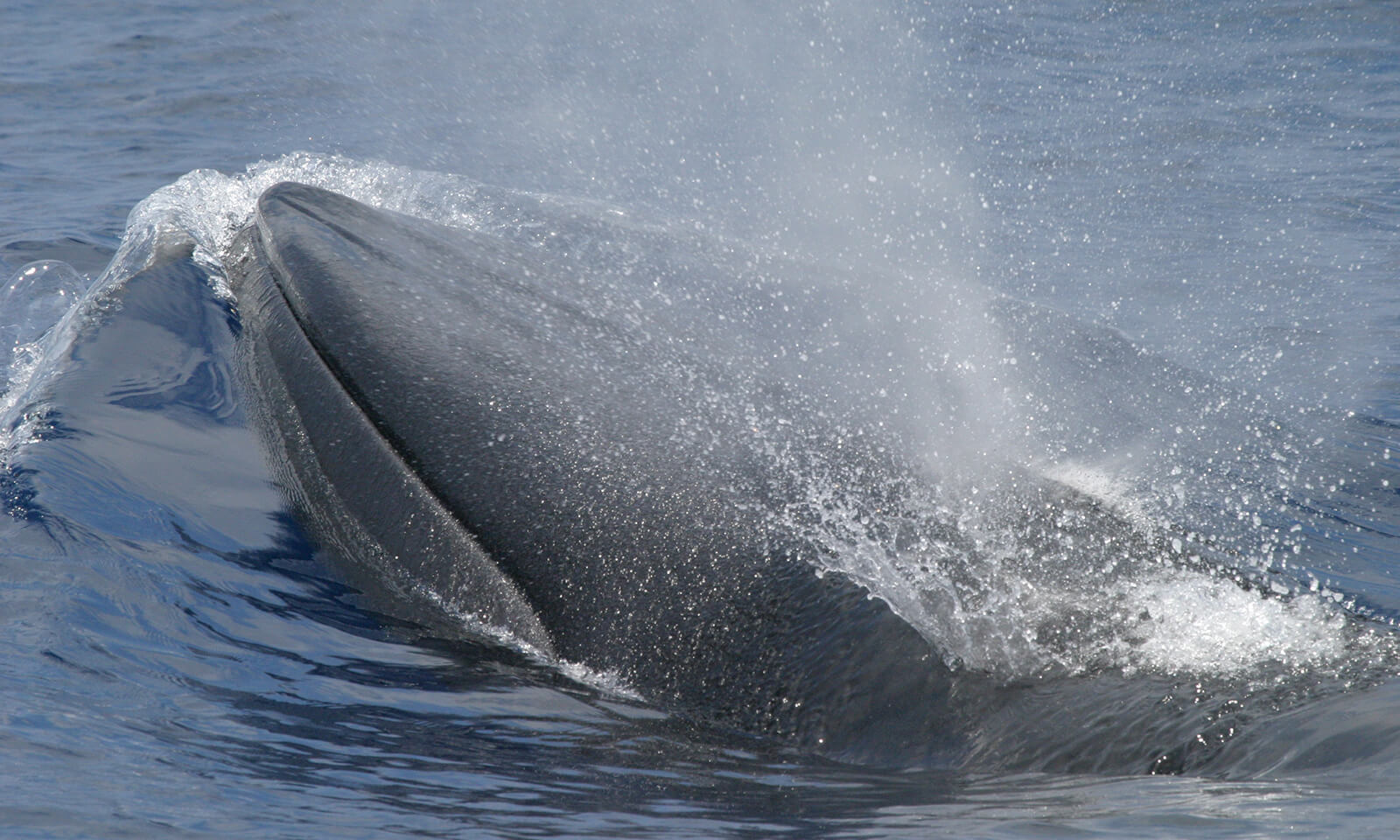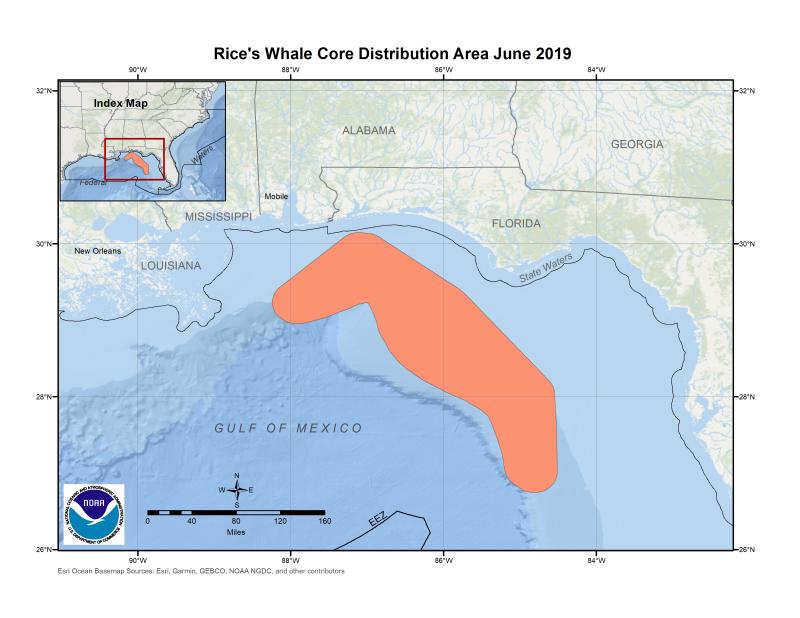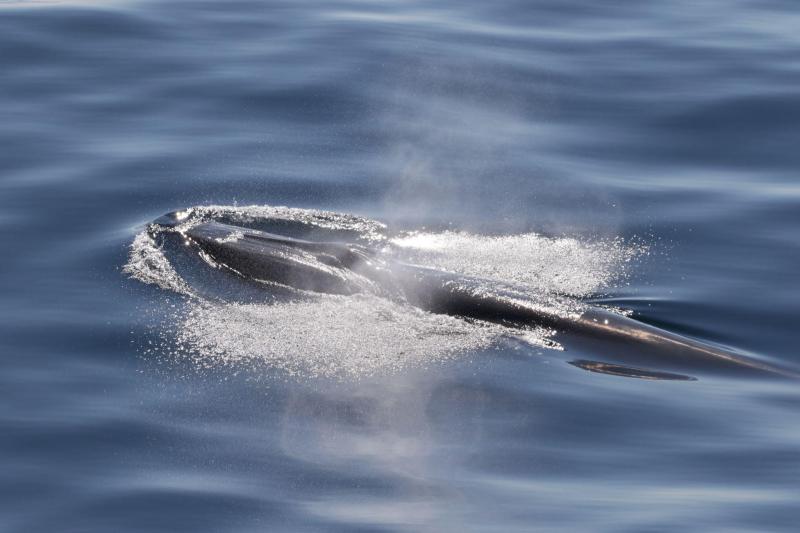We have much more to do and your continued support is needed now more than ever.
Meet the New Species of Endangered Whale Discovered in the Gulf of Mexico

A new-to-us species of whale has been discovered off of Florida’s coast in the Gulf of Mexico — an exciting and unique find for researchers.
The Rice’s whale, as it’s been named, was announced as a new species by researchers just last year, in 2021. Their name comes from biologist Dale Rice, who first realized the whales were present in the Gulf.
Originally thought to be a rare baleen whale called a Bryde’s (pronounced Broo-dus) whale, Rice’s whales are genetically and physically different. Even their calls are distinct!
The distinction of the whale species was discovered after researchers were able to examine the whale’s skeleton after a carcass was found stranded off of Everglades National Park in 2019. Features of the whales’ skulls and analysis of their DNA showed distinct differences between the Rice’s whales that exclusively live in the Gulf and the Bryde’s whales that are found across the globe.
“We joked in the past about nicknaming the Rice’s Whale the Gulf’s Whale,” says Dr. Alisha Renfro, coastal scientist with NWF. “They’re only found in the Gulf of Mexico and are one of the most endangered whale species on the planet.”
Rice’s whales are the only whales that exclusively live in the continental shelf waters of the United States. Their home base and range are small, and the whales mainly live in the deep waters off of Alabama and the Florida Panhandle, in an area called Desoto Canyon, a deep cut in the Gulf’s seafloor.
Originally thought to be a rare baleen whale called a Bryde’s (pronounced Broo-dus) whale, Rice’s whales are genetically and physically different.
According to NOAA, however, their range could have once been far more expansive. Whaling records dating back to the 1800s suggest the whales once roamed both the northern and southern Gulf of Mexico, possibly as far south as the Bay of Campeche, off the coast of Mexico.

The dark, sleek-bodied whales feed on krill and small fish by filtering water through their mouths, a diet similar to other baleen whales.
“Critically endangered”
The excitement of this newly uncovered species is somewhat overshadowed by the fact that the whales are extremely close to extinction. With only an estimated 50-100 of the whales thought to be in existence, it’s no wonder the new species wasn’t distinguished until recently.
Already a small population, the whales’ numbers dwindled by an estimated 22% following the BP oil spill. The Deepwater Horizon explosion spread oil into a wide area, some of which overlapped with the whales’ small territory.

“Their prime habitat is located fairly close to the source of the oil in 2010,” Renfro says. “How much impact it had on the Rice’s Whales is hard to tell. Since they’re found in deep water, it’s hard to see or recover bodies.”
Besides catastrophes like oil spills, other threats to the species include collisions with ships, mainly from commercial vessels that frequently cross the Gulf, marine debris, like ingestible plastics, ocean noise, and interactions with fisheries.
Our next steps
Now, as more and more attention turns to the Gulf as a site for wind energy, it is important to site turbines in locations that avoid impacting the Rice’s Whale. Wind energy development could have some of the same detrimental consequences that oil activity already does on marine mammals; loud noises can drive whales into unknown territory or confuse them when they try to communicate and underwater structures can limit their territorial range.

The National Wildlife Federation and its Gulf Program are preparing for responsible offshore wind energy to have a presence in the Gulf and are carefully reviewing all information as the Bureau of Energy Management considers locations for offshore wind development.
Along with our partners, NWF has strongly cautioned wind energy development in areas where Rice’s whale have been observed and include safeguards for the species.
Much of the information in this blog came from Jessica Bibza, our beloved coworker who passed away in late September. Jessica worked tirelessly to bring attention to the existence and protection of not only whales but manatees, sea turtles, and a plethora of other Gulf wildlife.





















